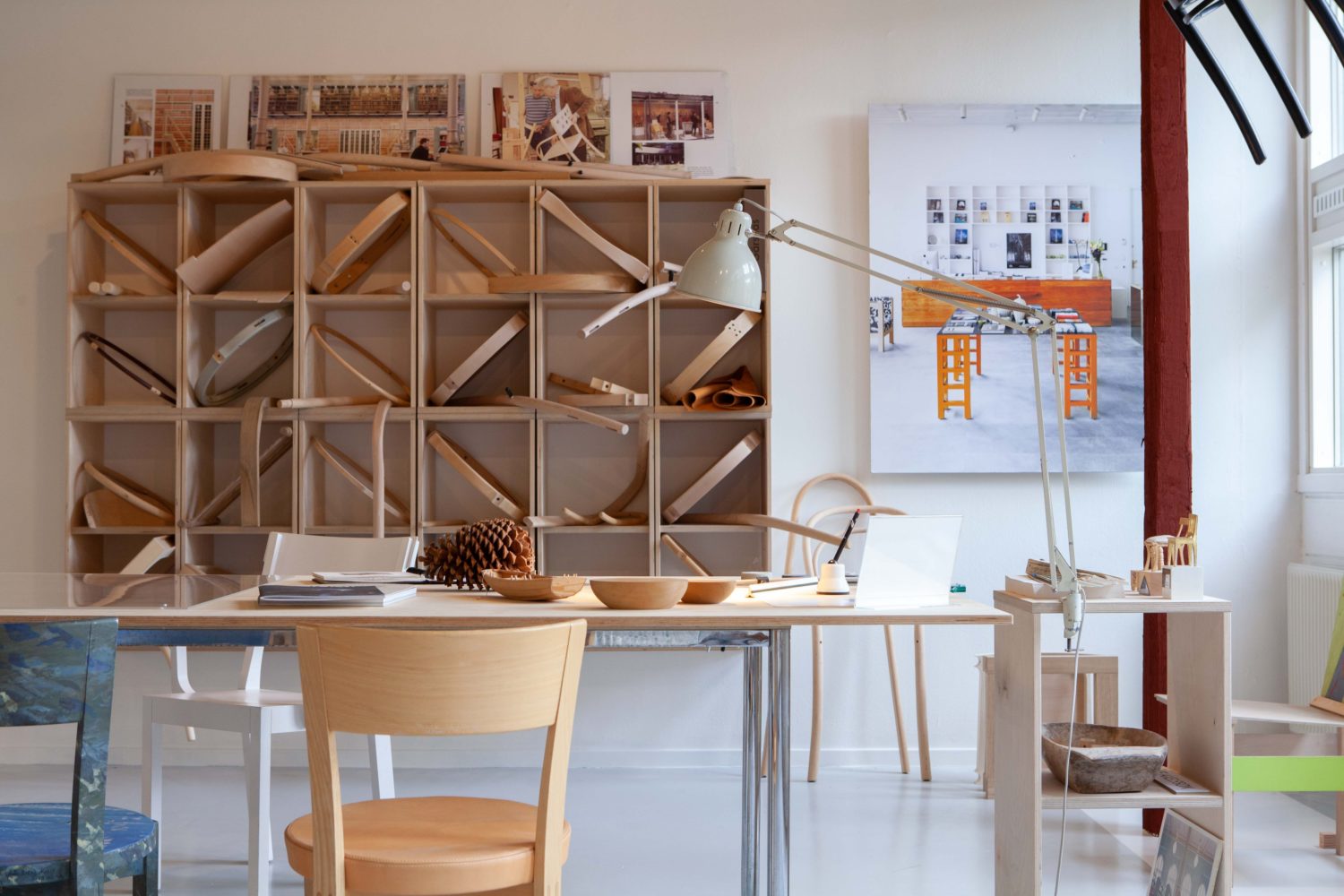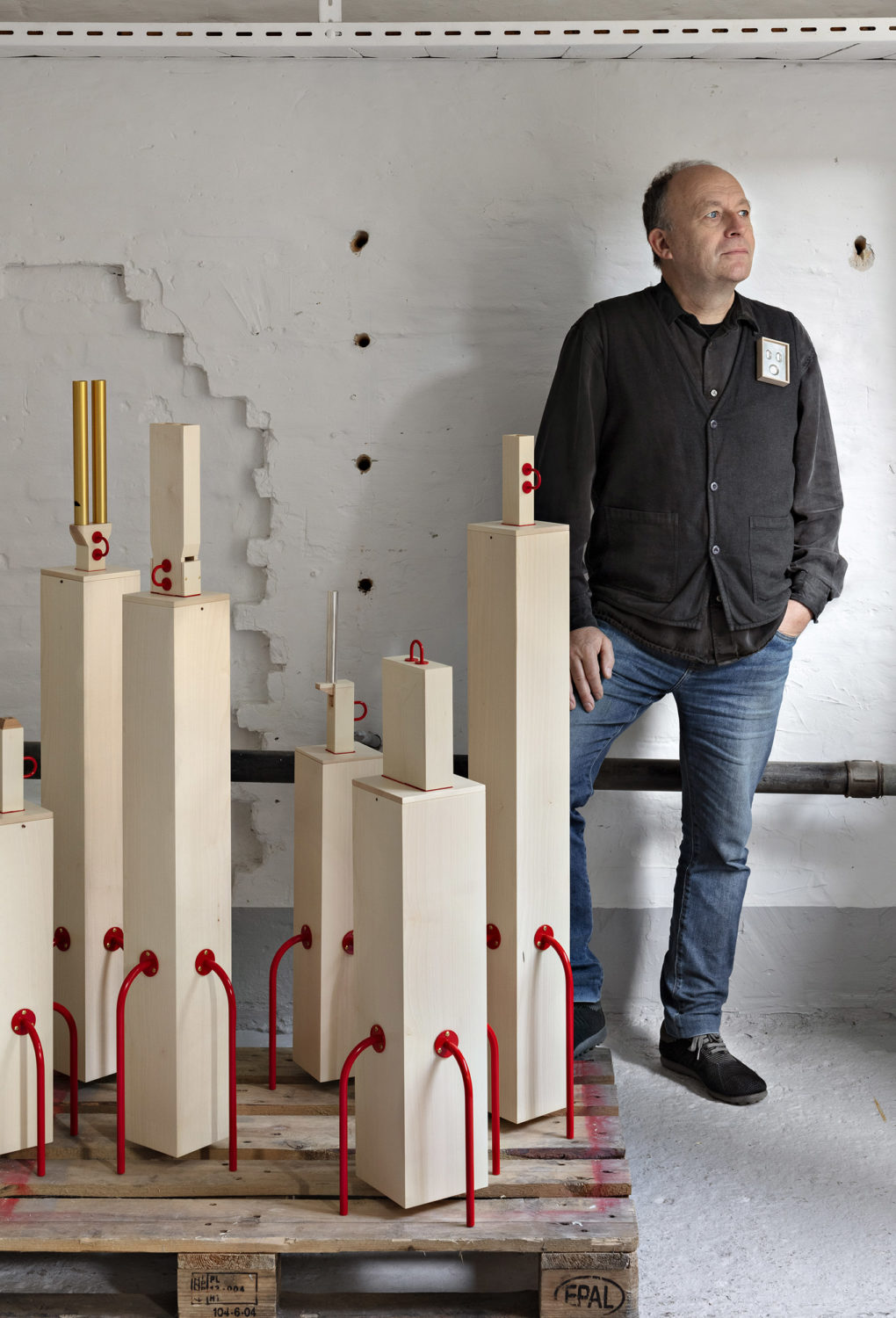
In fact, the Mediterranean stone fence stands in stark contrast to the nondescript building, which was originally built to house the administration of the oil refinery Mærsk Raffinaderi. As soon as you step through the door, you find yourself in a treasure trove of furniture gems, but that is not my focus today, so I quickly make my way to the upper floor. The stairwell is lined in wood battens painted red, a sensory trigger that mentally transports you to Sweden and prepares you for the exhibition ‘Welcome home, Åke’. The exhibition invites us inside a reproduction of Åke Axelsson’s home and workshop near Engarn on the island of Vaxholm in the Stockholm archipelago.
At the top of the stairs I find archival materials, prototypes, full-scale furniture, furniture models, drawings and a drawing table that seems as if Åke stepped away just a moment ago. The exhibition has a remarkably personal atmosphere, and I keep catching myself wondering if Åke is suddenly going to appear behind me, clear his throat and begin to talk about his work as an interior and furniture designer. His 60 years of experience in the field is palpable, and it takes almost superhuman restraint not to run one’s hands over the refined and daring wooden joints and eye-catching fabrics or rummage through the items on the desk. Look, but don’t touch – it’s hard. After slapping myself on the wrist a few times, I look up and realize that Bygning A is a huge space with windows on both sides and an almost explosive influx of natural light. The view beckons, and my attention is drawn to the cricket match being played by two teams of Indian players in Kløvermarken. It strikes me what a privilege it is that the world is opening again and allows me to be in Denmark, Sweden and India all at once. I return to Åke and the tingling in my fingers. The exhibition is a documentation and a sort of laboratory for furniture design based on what Åke has collected and created over his lifelong career. Impressive. Even though he is not physically present, he is here – in all the furniture from his hand that is showcased in the exhibition.

In the back of Bygning A I find the goldsmith – and idea smith – Kim Buck.
In this characteristic honest and engaging manner, Kim took the time to introduce me to his potpourri of jeweller and objects on display in his exhibition ‘Kammertonen’ (A civil tone), which offers a commentary on the way we interact and communicate with each other. The ‘civil tone generator’ consists of seven objects, each one ‘whistling’ its own note, creating resonance and compelling the viewers to be present in the moment. In this midst of this total presence, however, one is tossed around between pieces titled ‘Løsgænger’ (Unaffiliated), ‘Opblæst’ (Pompous), ‘Crossing borders’, ‘Made in China’ and ‘Out of Focus’ and Buck’s exuberant inventiveness. All the pieces are born of curiosity and an eagerness to explore and examine materials, phrases, implicature and relationships. Kim Buck has humour and heart (in the right place, I am tempted to add). Buck’s artistic practice is honest, and so is he. He articulates his failed attempts at understanding processes and uses them actively, for example in his ‘Out of Focus’ rings. He admits that he does not always have a plan for his objects but follows a playful path, and as a true master he acknowledges the dilemma any goldsmith or jewellery artist faces in relation to the ethical aspects of the extraction of precious metals and the harvesting of pearls.
Bygning A provides food for thought and offers a wild ride through a world of materials and outstanding craftsmanship combined in an engaging, honest and fully present experience.
Bygning A
Bygning A
Kløvermarksvej 70
2300 København S

